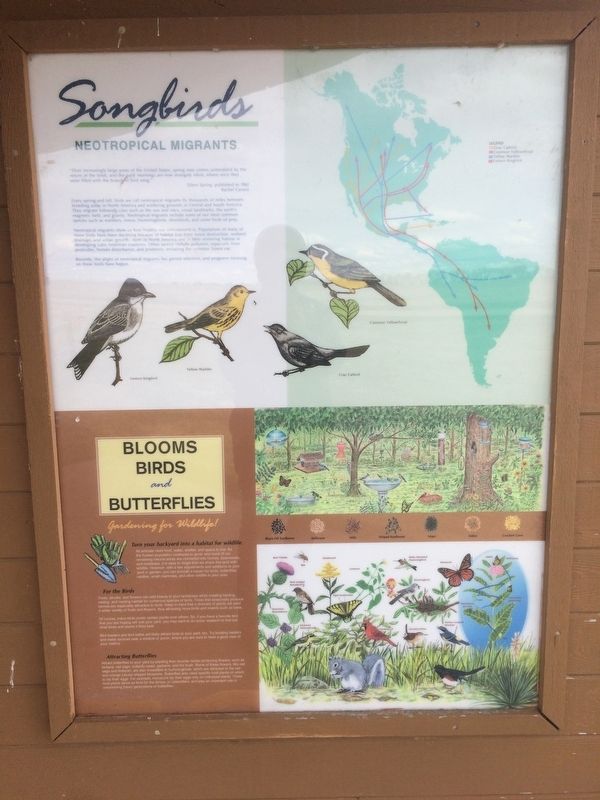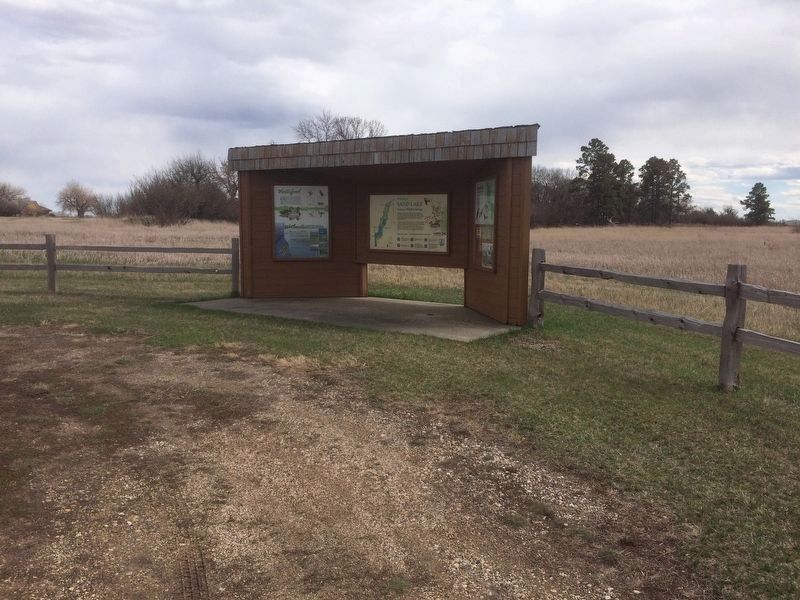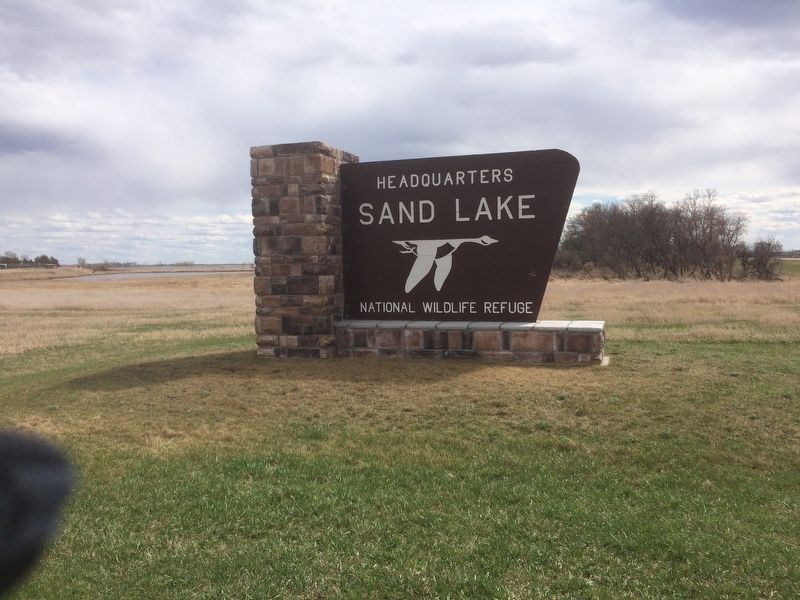Near Columbia in Brown County, South Dakota — The American Midwest (Upper Plains)
Songbirds
Neotropical Migrants
"Over increasingly large areas of the United States, spring now comes unheralded by the return of the birds, and the early mornings are now strangely silent, where once they were filled with the beautiful bird song." Silent Spring, published in 1962 Rachel Carson
Every spring and fall, birds we call neotropical migrants fly thousands of miles between breeding areas in North America and wintering grounds in Central and South America. They migrate following cues such as the sun and stars, visual landmarks, the earth's magnetic field, and gravity. Neotropical migrants include some of our most common species such as warblers, vireos, hummingbirds, shorebirds, and some birds of prey.
Neotropical migrants show us how healthy our environment is. Populations of many of these birds have been declining because of habitat loss from forest destruction, wetland drainage, and urban growth - both in North America and in their wintering habitat in developing Latin American countries. Other factors include pollution especially from pesticides, human disturbance, and predators, including the common house cat.
Recently, the plight of neotropical migrants has gained attention, and programs focusing on these birds have begun.
Blooms Birds, and Butterflies
Gardening for Wildlife
Turn you backyard into a habitat for wildlife.
All animals need food, water, shelter, and space to live. As the human population continues to grow, and more of our remaining natural areas are converted into homes, businesses, and roadways, it is easy to forget that we share this land with wildlife. However, with a few adjustments and additions to your yard or garden, you can provide a haven for birds, butterflies, reptiles, small mammals, and other wildlife in you area.
For the Birds
Trees, shrubs, and flowers can add beauty to your landscape while creating feeding, resting, and nesting habitat for numerous species of birds. Trees that seasonally produce berries are especially attractive to birds. Keep in mind that a diversity of plants will yield a wider variety of fruits and flowers, thus attracting more birds and insects such as bees.
Of course, many birds prefer certain plants over others. So, if you have a favorite bird that you are hoping will visit your yard, you may want to do some research to find out what trees and plants it likes best.
Bird feeders and bird baths will likely attract birds to you yard, too. Try locating feeders and water sources near a window or porch, where you are sure to have a good view of your visitors.
Attracting Butterflies
Attract butterflies to your yard by planting their favorite nectar=producing flowers, such as lantana, red sage, butterfly weed, garberia, and fire bush. Some of these flowers, like read sage and firebush, are also irascible to hummingbirds, which are attracted to the red and orange tubular-shaped blossoms. Butterflies also need specific host plants on which to lay their eggs. For example, monarchs lay their eggs only on milkweed plants. These host plants serve as food for the larvae, or caterpillars, and play an important role in establishing future generations of butterflies.
Topics. This historical marker is listed in these topic lists: Animals • Environment. A significant historical year for this entry is 1962.
Location. 45° 43.577′ N, 98° 18.362′ W. Marker is near Columbia, South Dakota, in Brown County. Marker is on Sand Lake Dr., ¼ mile County Highway 16, on the right when traveling east. Touch for map. Marker is in this post office area: Columbia SD 57433, United States of America. Touch for directions.
Other nearby markers. At least 8 other markers are within 5 miles of this marker, measured as the crow flies. Waterfowl (here, next to this marker); Sand Lake National Wildlife Refuge (here, next to this marker); The View from the Top (approx. ¼ mile away); Sand Lake's Observation Tower (approx. ¼ mile away); Father Alexandra Ravoux (approx. 1.1 miles away); a different marker also named Sand Lake National Wildlife Refuge (approx. 3½ miles away); Civilian Conservation Corps Camp (approx. 3½ miles away); Columbia Marsh (approx. 4.7 miles away). Touch for a list and map of all markers in Columbia.
Credits. This page was last revised on April 21, 2017. It was originally submitted on April 19, 2017, by Ruth VanSteenwyk of Aberdeen, South Dakota. This page has been viewed 435 times since then and 13 times this year. Photos: 1, 2, 3. submitted on April 19, 2017, by Ruth VanSteenwyk of Aberdeen, South Dakota. • Bill Pfingsten was the editor who published this page.


